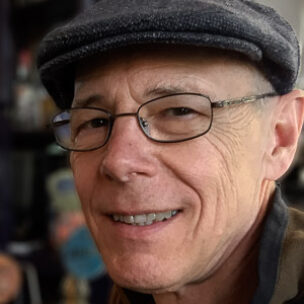by Russell Banks
TPS Member Russell Banks reached a point in his photographic journey where he needed guidance. Here are the steps he took and what he learned.
I'd been working on my Floating World project (a series of images taken on large cruise ships) for a few years, and knew I had some strong images, but they were going in a lot of different directions. There are just so many things to shoot in the complex environment of a cruise ship: the passengers, the hard-working crew, the specialized architecture and over-the-top decor, and the activities on the ship and around the pier. I needed to focus more, and wanted input on what direction to take for upcoming trips. (Alas, all have been cancelled or delayed, thanks to the pandemic!)
I was also unsure if there was any interest today in work done with a documentary style. I'd been out of the exhibition world for many years, and knew a lot had changed. So, I thought a portfolio review might save a lot of time by helping me assess the work I'd done and make some decisions going forward.
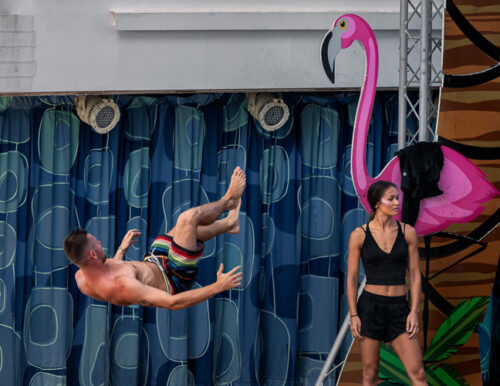
I had little experience with reviews because I'd drifted away from creative photography during my working career, and had only recently built a body of work that was ready for serious input. Houston's FotoFest Biennial in March 2020 was approaching, so I decided to attend the review sessions there.
Please note that there are many opportunities offered across the country, as well as individual and virtual reviews, such as Texas Photographic Society's Image Critique Program. Most of what follows can be applied to a single review session. Whatever you can do will be well worth it.
What I expected...
I'd done a little research on portfolio reviews, and had some ideas on what to expect. First, I wanted honest and constructive feedback from expert gatekeepers on what route I might take, the quality of my work and what potential venues I might find for sharing it. Second, I hoped to connect with other artists because I feel isolated in my small, Colorado town. Third, I wanted to see examples of portfolios. And finally, I wanted to improve my skills of discernment so I could more confidently judge the strength of an image.
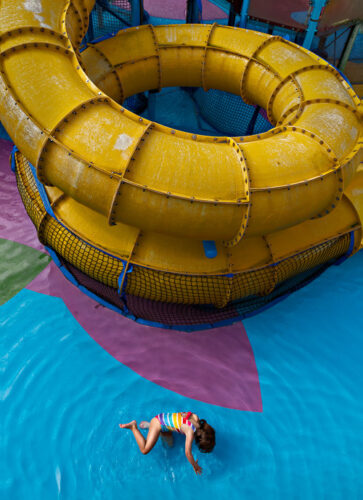
What I put into it...
The event was scheduled for early March, and I started preparations the previous September, studying biographies of the reviewers so I could request those that seemed right for the kind of work in my portfolio. In January, I ranked the reviewers according to which ones I most wanted to see, and ended up getting most of them.
Next, I did a deeper dive on how to get the most out of a review event. (Just search the topic.) That included zeroing in on what I wanted to accomplish.
I bought a portfolio case and designed business cards and bookmarks, printed with a selection of images. Knowing which reviewers I would see, I printed a page for each that included their biography, key questions I wanted to ask, and little thumbnails of my images, under which I could write notes when they mentioned specific ones. I put them in a three-ring binder, but found that awkward, given the limited table space, and ended up removing them and folding them in half.
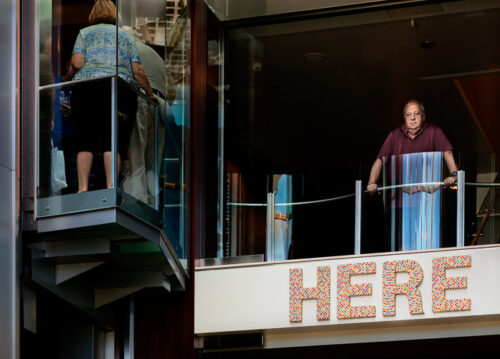
Of course, the most time went into preparing the prints I would take. I wanted them to be my very best images, so I selected from finished prints— the best I could make. I prepared about 40 images over six weeks, got input from a few artist friends, and finally chose 14 to present, with 13 others to have in the bottom of the portfolio case if the reviewer wanted to see more. (Most did.) The prints were on 11x17 paper, with a minimum one-inch border, spray-varnished and unmatted. Ease of handling is critical to making best use of the quickly passing 20 minutes you have with each expert. It is intense, and every minute is expensive, so you want to eliminate barriers with near-obsessive preparation.
TIP: I numbered the prints on back with small, removable Avery labels, so I could quickly get them back in the order I wanted after they were shuffled while viewing. Some of the reviews were back-to-back, where I had to get up from one table, walk over to another one, and immediately start the next 20 minutes.
I used my phone to record each review, after getting permission, then went back over the conversations at night in my room.
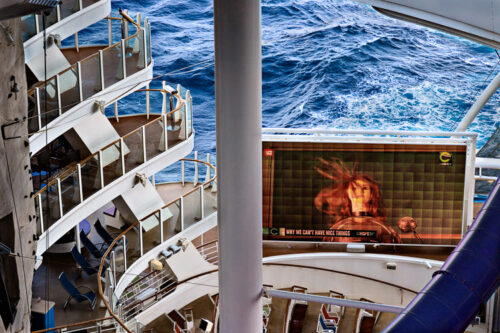
What I got...
Any time you can get input from a skilled reviewer is great, and if you can meet with several, it's even better because the variety of perspectives can really deepen your thought process. The reviews were, for the most part, thoughtful, detailed and focused on the work. A huge bonus was time spent sharing my images with other photographers and looking at their work, between the scheduled activities. Seeing how others think about their work is a great inspiration.

Key takeaways...
- The quality of my work is "there." I just need to focus the portfolio more narrowly, and be able to frame it in the context of both past and contemporary artists.
- I need to connect it to my experience — to make it more personal. What does it mean to ME?
- The best work in this project expresses my sense of humor and irony. I should keep it light and fun, and continue presenting the subjects with affection.

What reviewers said...
Here's a sampling of the kind of input I received:
- Do more juried shows. When you start getting in every one, start concentrating on solo shows. We're watching, looking at the results for a "thumbs up" from others.
- You must keep the work in front of people... they see so much. I can't tell you how many don't follow up.
- Submit the 10 strongest to online magazines NOW, with the coronavirus and cruise ships in the news. You've definitely got 10 really killer images.
- I haven't seen anything like this, and I look at a lot of work.
- You can see both the dream and the reality, and it's the tension between the two that make the work strong.
- It's not so much a matter of what your potential audience might think about it, but what your inner audience says about it. Art is about something you're finding out, and is more valuable to both us and you.
- I like that it's based on your lived experience. Not like most travel work. It's more interesting because it's your real life.
- For an exhibition, think about adding levity. It's such a joyful, fun and interesting project. We want to create dialogs with our exhibitions that are important to have right now. Think about the ways you can continue framing it (desire, unreality) and what that says about who we are at this time.
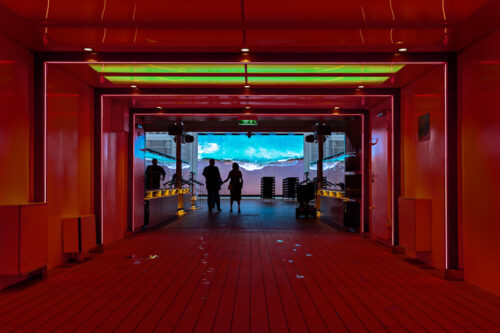
What I've done as a result...
It's important to keep in mind that some of the input will be contradictory, so while you should consider it all, you must go where your heart takes you. As Gerhard Richter said about his paintings, "They have their own way. I'd planned something totally different." When I got home, I listened to the recordings again and made careful notes, organizing them according to themes, so I could consider what different reviewers said on the same topic.
One of the best gifts were deep questions the reviewers asked. I listed them and went through them over many days, writing a page or two in response to each, and I continue to clarify my responses. This has helped me refine the project, selecting which existing images should be included in the portfolio and potential exhibits, and deciding which directions to explore when I can next get back on the ships.
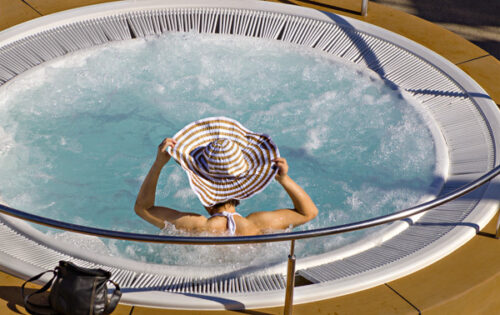
I was advised to make small prints of a broad selection from the project and lay them out on the floor for sorting and organizing, looking for combinations, ideas and themes as I pass by them over several days. It really is a lot better than looking at screens full of thumbnails. Images that don't belong with others really jumped out at me. I just exported them from Lightroom and ordered 4 x 6 prints from Costco. Cheap and easy. This has helped me select a stronger set for my portfolio, and to be more confident of what I'm putting out there and what I will shoot in the future.
I was also encouraged, given the current news, to get this project out into the world now. So, in addition to an occasional call for entry submission (mostly depending on who is the juror I want to see my work), I have submitted to a few online magazines, with some success, and many more attempts to come. I was recently selected as the featured artist in F-STOP Magazine's Documentary 2020 issue, with several photos and a nice interview.
Interested? Here's what I suggest...
- Prepare. Prepare. Prepare. Know what you want to get out of it. If a large review event is not in the cards, invest in a single review.
- Also, refine and practice the "elevator speech" you will use to tell the reviewer about your project while they're leafing through your images.
- To sum up, you'll get much more out of it if you feel confident and comfortable.
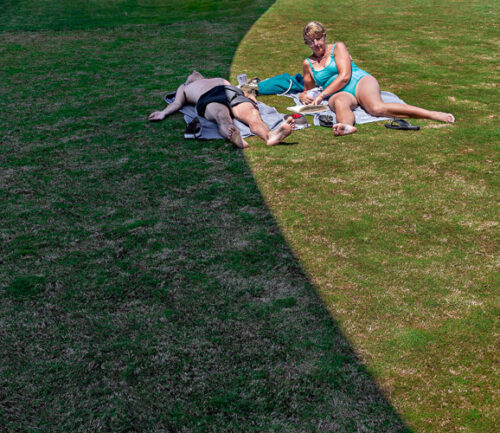
Russell Banks is rooted in traditional documentary photography, believing that the real world can dish out material far more compelling and credible than anything he could make up on his own. His Floating World project explores the complex social, economic and visual environment of today's behemoth cruise ships. Russell is based out of northern Colorado.
